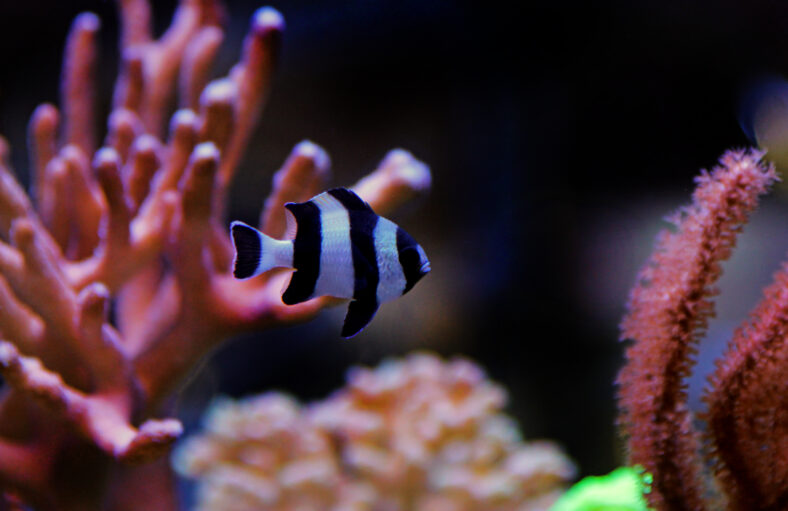These Fish Outwit Predators With A Unique Motion Dazzle Defense, And It’s A Lot Like A Technique Used In World War I

What usually comes to mind when thinking of animal camouflage are creatures staying still to blend in perfectly with their surroundings.
For instance, an Arctic fox becomes invisible in the snow, and an octopus can disappear into coral. However, that only works if they remain perfectly motionless.
For some animals, staying still isn’t an option because they need to move around their habitats in search of food. But even when they’re on the move, they can still manage to stay under the radar.
New research suggests that high-contrast patterns on animals’ bodies help with camouflage in more ways than one.
The patterns can make them blend in with their surroundings when stationary and create a “motion dazzle” effect when moving.
It confuses predators and makes them misjudge the location of their prey.
The defense strategy is a lot like the “dazzle camouflage” technique used in World War I, which involved painting ships in various patterns to confuse enemy submariners about their target’s direction and speed.
The humbug damselfish is one of the creatures that uses motion dazzle as a form of protection. They are small, black-and-white striped fish that live in groups among coral reefs. They also move frequently to feed, putting themselves at risk of attacks from predators.
Predators include groupers, snappers, crabs, coral trout, wrasse, and starfish, which can eat damselfish eggs. In their study, a team of researchers found that humbug damselfish adapt their behavior depending on the type of environment they are in.

Sign up for Chip Chick’s newsletter and get stories like this delivered to your inbox.
“In their natural habitat, when they encounter backgrounds resembling their own striped patterns, like branching corals, they tend to move closer and reduce their movement. This likely helps them blend in and stay hidden from predators,” said Dr. Louise Tosetto from Macquarie University’s School of Natural Sciences.
“However, when feeding outside the coral colony, where camouflage is less effective, they increase their movement and rely more on the confusing effects of their stripes, known as motion dazzle.”
The research team investigated how different backgrounds affected the fish’s ability to use motion dazzle to confuse predators.
They filmed the fish swimming in tanks against various striped backgrounds. Then, they used computer models to simulate how predators would view this movement.
The researchers also analyzed anatomical data from the retinas of humbug damselfish to understand how the fish sees different patterns.
The team discovered that when damselfish were against backgrounds that made it hard for predators to spot them, they tended to swim closer to the background and move around a lot more.
The increased movement makes their stripes create confusing motion cues. But the damselfish actually gained more advantages when the background contained clear, wider stripes that were easily seen by predators.
The edges of their bodies seemed to blur and the combination of their own stripes and the background stripes threw off predators, making them unable to judge the speed or direction of the damselfish accurately.
“This suggests that humbugs can see different backgrounds and might then change their behavior to improve their protection from predators,” said Dr. Tosetto.
The study was published in the journal PeerJ.
More About:Animals





